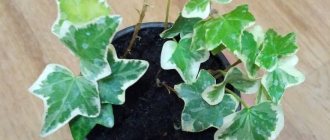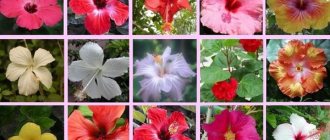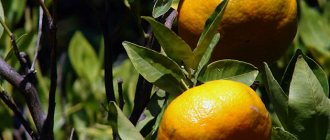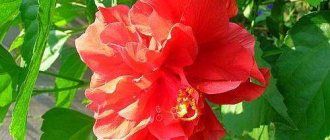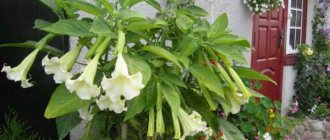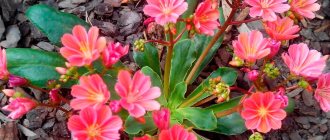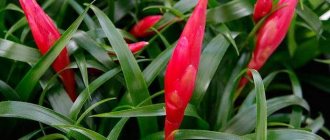The origin of the indoor pepper variety Ogonyok
Let's talk about the history of pepper. Before growing a particular crop, I like to delve into its history. Find out the origins, so to speak. Now I’ll share with you what I dug up about the well-known “Ogonyok”.
So, the tropical part of America is considered the birthplace of origin. Archaeologists say that ancient remains of the fruit were found in Peru. The most interesting thing is that you can still find peppers growing in the wild in the forests of South America.
The first European inhabitant to become acquainted with Ogonyok was Columbus. He found it in 1493 in Haiti. It turns out that the history of pepper goes back to the distant, distant past.
Columbus brought Ogonyok to Spain along with other unknown products (beans, tobacco and other exotics). It is surprising that hot pepper was originally used as a medicinal plant. But only decades later it began to be used as a spice and seasoning for dishes.
The variety came to Russia back in the 16th century and began to actively spread, first among the nobility, then in families with less income. Ogonyok was officially included in the State Register of the Russian Federation in 2006.
You can see the description and characteristics of the variety in the video below:
Do you want to plant a different variety? Read how to grow hot peppers on your windowsill.
Features of the Ogonyok variety
Each variety of pepper has its own special qualities. If we consider Ogonyok, then I highlighted the following points:
- You can grow it not only at home (on a windowsill, for example), but also in open ground. It is interesting that the height of the bush in this case will be different. At home it is no higher than 35 cm, but in the “free” the bush can grow up to 55 cm.
- The plant can bloom and bear fruit at the same time.
- Refers to self-pollinating varieties of pepper.
- Needs shaping.
To make it easier for you to understand whether you need to grow Ogonyok, I’ll tell you its pros and cons:
| Positive sides | Negative |
| There are many options for growing: in open ground, at home, in a greenhouse. | It is difficult to find the real Ogonyok for sale. Often other varieties that do not fit the description are sold under this name. |
| Doesn't take up much space on the windowsill, the bush is compact. | The ripening period is average: it bears fruit 120-130 days after the appearance of the first shoots. |
| High yield: you can collect up to 3.5-4 kg of peppers from one bush. | There is a need to form a bush. |
| Resistant to diseases such as bacteriosis and verticillium wilt. | The fruits ripen unevenly. This is convenient for some, but I don’t like it, so I put it in the minuses. |
| With proper care, it bears fruit all year round. | High maintenance requirements. Does not like shady places, must be protected from direct sunlight, waterlogging of the soil, and drafts. |
| Consumption has a positive effect on human health and has many medicinal properties. For example, it helps with colds, flu, and improves immunity. | Due to its strongly pronounced burning taste, it is contraindicated for people with any gastrointestinal problems. |
Author's note
Natalia Papanova
Blog author
When grown in an apartment, Ogonyok becomes a perennial plant. But if in open ground, then the bush only lasts for a year.
This is what the fiery red fruits of the correct variety of pepper “Ogonyok” look like
Reviews
Ogonek is liked by all housewives who love spicy food. Reviews about it are mostly positive.
Yulia, Dnepropetrovsk: “This is not the first year I have been growing Ogonyok at home. In winter on the windowsill, and in summer on the balcony. Very spicy but tasty. During fruiting and flowering, the bushes look beautiful. I add peppers to food, marinate them and eat them raw.”
Igor, Krasnoyarsk: “Last year I planted Ogonyok at home. I grow it in a large pot on the windowsill. The plant does not require special care. I feed it only 2 times a month. The peppers are small, but very spicy. Just 1-2 pieces will make your food spicy. I like".
Growing Ogonek pepper on the windowsill
Now let's talk about growing peppers. To be honest, for some reason everyone is afraid of this. They say that everything is complicated. But I’ll tell you from my own experience: there’s definitely nothing difficult. I think after the information I will provide below, you will be convinced of this.
How to choose a container
Let's move on to the container. I used the following options:
- Special small plastic cells (I had about 6 by 6 cm). Convenient and practical option. There is one seed in one cell, so when replanting it to a permanent place, the root system is not injured: the pepper is taken directly with a lump of earth.
- Plastic cups. The option is identical to the cells, but even cheaper. Only in this case you will need to make a couple of holes at the bottom so that excess water can drain. You can replace them with cardboard ones, but this is not so convenient. Paper tends to get wet from moisture. As a result, you may end up with porridge and not a pot.
- Peat pots. Convenient, but expensive. The beauty here is that when transplanting, the pepper is planted in new soil right in the pot. This will also be an additional fertilizer for him. In general, you don’t have to fool your head at all.
- Wooden boxes. Of all the options, I think this is the most unsuccessful: the seeds are planted all over the place. As a result, during transplantation you have to literally tear the sprouts out of the ground, injuring the delicate root system. So it turns out that after such an intervention the plant will still be stressed for a couple of weeks.
This is what I use. If you find something more suitable for yourself, please, there is complete freedom of choice.
Are you growing Ogonyok peppers on a windowsill?
Not really
I also wanted to mention the containers that will be used as a permanent place for the plant. In this regard, pepper also does not have any special preferences. You can choose any option when it comes to material (ceramics, clay, plastic, and so on). The main thing is size. It must be more than 30 cm in diameter.
Have you become familiar with the rules for choosing containers? Then find out how to store garlic at home. Useful information for the farm.)
Author's note
Natalia Papanova
Blog author
Before planting, disinfect the containers with boiling water. This will protect the plants from infections and diseases.
I chose ceramic containers for the peppers. No need to complain
What soil should I use?
Ogonyok is already more demanding with soil than with pots. So here I recommend preparing the soil yourself. I use this composition:
- soil (regular from the garden);
- humus;
- turf;
- sand (river sand is best);
- wood ash.
I mix the first 4 components in equal proportions. I add ash at the rate of 1 cup per 10 kg of finished soil. That's all, mixed until smooth and set aside.
Author's note
Natalia Papanova
Blog author
It is not recommended to add components such as manure and compost to the soil for seeds. They will make the soil too heavy for the peppers to grow properly.
If you don’t want to cook it yourself, you can buy soil at the store. I can recommend “Premium” or “Air”. I liked both options, so you can purchase and use.
Whether you make it yourself or buy it doesn’t matter. The main thing is to carry out the disinfection procedure. This can be done in the following ways:
- Treat the soil with a fungicide. This method is used only if there are serious doubts about the quality of the soil. In other cases, it is better to use more gentle means. But if there is still such a need, then I recommend treating it with the drug “Farmayod”. Dilute in the proportion of 100 ml of product per 10 liters of water (warm). Then pour the resulting liquid generously onto the soil. After 2 days, you can safely plant the pepper.
- Steam. You need to keep the soil in a water bath for 30 minutes. After such treatment, it is better to store it hermetically sealed.
- Disinfect in the oven at 50 degrees. Some people say you need to use higher temperatures. But I think this is inappropriate, since if you increase the heat, then beneficial microorganisms will also die
. - Treat with a weak solution of potassium permanganate. It is diluted in the proportion of 100 g of product per 10 liters of water. Then the soil is spilled and dried.
Other varieties are less demanding on soil. For example, you can plant chili peppers on the windowsill. You won't have to worry too much about it.
How to disinfect the soil using a baking sleeve, see the video:
How to plant from seeds
Landing is very simple:
- Select planting material. To do this, dilute 30-40 g of salt in 1 liter of water, dip the seeds into the solution, and let stand for 7-10 minutes. Whatever floats up, throw it away, these seeds will not sprout.
- Place good seeds in gauze moistened with water. Leave in a warm place for a day. Spray periodically with a spray bottle for additional moisture. In a day, shoots will begin to appear.
- Fill the containers with prepared soil. Make a small indentation (about 1-1.5 cm). Place one seed in each hole. If there is a lot of planting material, put 2-3 at a time, do not be afraid to sow. Only after germination remove weak specimens and leave the strongest
. - Sprinkle with soil. Moisten with a spray bottle and cover with film or glass.
You can remove such a “blanket” immediately after the shoots appear. Until this point, ventilate the cells every day for 15-20 minutes.
Pepper shoots will appear in 4-7 days
Caring for peppers at home
Has the bush gotten stronger and is already sitting in its permanent place in the pot? Then it's time to reconsider caring for the plant. There is nothing complicated in this regard. I will describe and explain each step in detail.
Don’t want to bother with caring for your crop? Read how to store zucchini at home. The vegetable is also healthy and tasty too.
Lighting, temperature and humidity
Let's start with lighting. In the first six months of life, it is best to place Ogonyok on a windowsill on the south side, as the plant loves sunlight. Then you can put it on the east or west side. Forget about the northern one. And speaking in numbers, the lighting for a pepper per day should last 12 hours. Therefore, arrange additional lighting on cloudy and winter days.
Author's note
Natalia Papanova
Blog author
If the pepper does not get enough sun, it will begin to stretch out and spend all its strength and energy on forming the main stem.
The temperature for normal development should be from 22 to 25 degrees. Make sure that the indicator does not fall below +15. This temperature completely stops the growth of the pepper and the plant begins to die. Also avoid sudden changes in temperature. This can affect the immune system, weakening it.
Humidity should be 70-85%. To measure the air humidity in your room, purchase a special device - a hygrometer. If you find that there is not enough humidity, then place a couple of containers with clean water in the room. After 1-2 days the indicator will stabilize.
If there is no goal to get a harvest from the plant, then grow decorative peppers at home. It will decorate any room.
Proper watering
Watering is carried out as the soil dries. From personal experience, I noticed that during hot periods it is necessary to moisten the soil 2-3 times a week. In this case, one bush requires 500 ml of warm water.
If we talk about wet (cloudy) weather, then the frequency of watering is reduced to once a week. I leave the volume the same. As a result, the bush feels great. So you can also try this watering system.
If watering is sufficient, the foliage will become rich green.
Fertilizer and feeding
It is mandatory for pepper to be fed 4 times. I’ll tell you now about when and how to do this. Let's start in order:
- The first feeding is carried out 15-20 days after emergence. Its goal is to accelerate the development of the root system and increase the immune system. For this treatment, I used a solution based on double superphosphate (2.5 g) and urea (10 g). I dissolved all this in a bucket of water (I have about 9-10 liters). Then she poured it into the root part.
- The second feeding is carried out in the second week after transplanting the pepper to a permanent place. Here I have already used fertilizers such as superphosphate or ammonium sulfate. I introduced each of them in turn with an interval of 7-10 days. The first is diluted in a proportion of 5 g per 10 l, and the second - 10 g. It is applied to the root part in a volume of 100-150 g per bush. When watering, try not to get it on the leaves so as not to burn it. This feeding stimulates the growth and development of the plant.
- Feed Ogonek for the third time at the time of flowering. Here I recommend complex fertilizers “Ecohuminate” or “Dachnik”. The first one is poured dry into the root part (10-15 g per bush). The second one is diluted in 8 liters of water (5 ml), and then the pepper is poured with the solution. Such measures help enrich the soil with microelements necessary for flowering shrubs.
- The last time feeding is done at the time of fruiting. Here I used a simple remedy - a urea solution. I diluted 25 g in 10 liters of water and watered it. As a result, the fruits ripened faster and more evenly.
To see what other organic fertilizers you can feed peppers with, watch the video:
Diseases and pests
Even when growing plants on a windowsill, diseases and parasites appear. Popular problems with Ogonyok pepper include:
- if the leaves fall off or turn pale, this indicates a lack of sunlight, so it is advisable to use a garden lamp;
- aphids appear in dry and warm air, and they are destroyed by insecticides, for which you buy “Fitoverm” or “Agromertin”;
- Sometimes spider mites appear, which can be removed with store-bought medicines or a soap solution.
If you maintain optimal temperature and humidity, you don’t have to worry about the appearance of parasites or diseases.
Why does the Ogonyok pepper not bloom on the windowsill?
There may be no flowering for the following reasons:
- Incorrect care. The wrong regime of watering, temperature, and lighting was organized for the plant. In this case, you just need to normalize all these indicators.
- Excess nitrogen. If too much nitrogen fertilizer is added, the pepper will form a green mass, but will not bloom. To eliminate, add 1-2 cups of fresh sawdust to the soil and loosen it. And also stop applying any fertilizers.
- Lack of nutrients. To replenish the balance of essential microelements in the soil, use products such as “Ovary” or “Bud”. In the first case, the drug is diluted 2 g per 1.4 liters of water, in the second case - 1 g per 1 liter of water. Afterwards the bush is sprayed (you can use a spray bottle). In a couple of days the pepper will begin to bloom.
Author's note
Natalia Papanova
Blog author
Be careful with nitrogen-containing fertilizers. A deficiency of this element is easier to eliminate than its excess.
Have you reaped a rich harvest, but don’t know what to do with it? Read on to learn how to store peppers in your apartment!
FAQ
Natalia Papanova
Blog author
Ask your question
Now let's talk about the questions that arose in my mind while growing peppers. To be honest, they appeared at the most inopportune moment. So that they don’t take you by surprise, I’ll share the answers.
When to plant Ogonyok pepper?
Since the planting process takes place at home, there is no difference in planting time. Plant whenever your heart desires.
Collection and use of fruits
Already 3 months after planting the seeds, the first ripe fruits appear. Then the plants bear fruit throughout the year, so flowers appear regularly on the bushes. Ripe fruits are distinguished by a red tint, and also become fleshy and soft.
Peppers can be stored fresh or processed. Fresh vegetables are transferred to the refrigerator, where they remain fresh for a month. If you wrap them in cling film or polyethylene, this increases the shelf life. They can be dried or frozen, canned or pickled. They are often used to create pickles, so they go well with other vegetables and herbs.
Expert opinion
Stanislav Pavlovich
Gardener with 17 years of experience and our expert
Ask a Question
Attention! It is advisable to use gloves when working with this pepper, as the juice burns the skin.
Let me sum it up
- To boost immunity, you can harden the seeds before planting. To do this, place them in warm water until they swell, and then in the refrigerator for 24-36 hours.
- Under the “Ogonyok” variety there may be a completely different pepper hiding. So, when purchasing planting material, carefully check that it matches the description of the real Light.
- Be sure to disinfect the land for planting. Thanks to this, the risk of plant disease will decrease several times.
So, now you know that growing Ogonek pepper at home from seeds is not a difficult task if you follow the planting rules and take into account the nuances of care. To ensure that knowledge is not forgotten, start planting immediately. You will definitely succeed!
